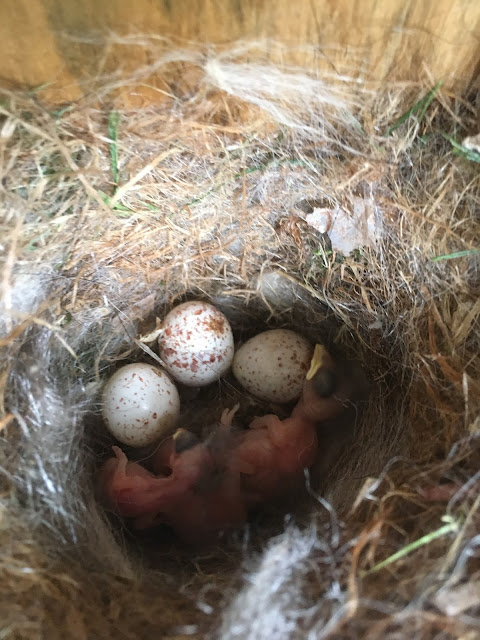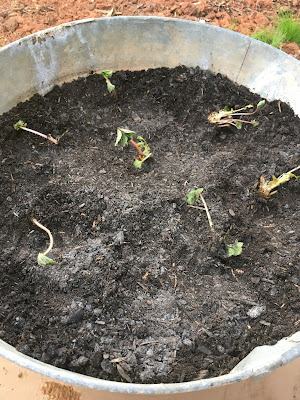One of the goals I've had for the last couple of years
is to improve my gut health.
As I have learned over the many years of
helping C with his gut issues,
there is no substitute for a tip-top microbiome.
A lack of attention to it can cause everything from
behavior issues to allergies, digestive problems and general inflammation in the body.
One way to create and maintain a healthy gut is by eating foods
rich in probiotics.
This would include fermented foods like kefir,
pickled veggies, sauerkraut and yogurt.
The good bacteria and yeast in these food items
help your body to stay balanced and functioning at its peak.
Lately, it's been fun experimenting with different types of kraut.
The local Cooperative Extension gave a class on fermentation
not long ago, that I was able to attend,
and it got my curiosity going.
Could I really make something like sauerkraut,
which I don't remember ever eating as a kid?
In order to attain the health I desired,
I decided to give it a go.
Over the past month or so, I've been enjoying
not only the preparation and eating of it,
but the results as well.
It's made a world of difference to my health,
leaving me feeling that intentional eating really does have an effect
on my overall health.
It's a good feeling.
Sauerkraut is so easy to make and requires only a few ingredients,
some muscle, and a little bit of time.
Keep in mind that it most likely doesn't taste like
what you can find in the grocery store.
Homemade is always better, IMHO.
What I like about these concoctions,
is that they can be tweaked to your liking.
For instance, I may not get a whole lot of juice
out of the cabbage when massaging it in the bowl,
so I just top it off with a little water when I
transfer it to the glass jar to ferment.
In this way, it's not as pungent as it might be,
which works for me just fine.
The optional ingredients are up to the maker.
There's really no end to the combinations to be had.
This one's a game changer, folks.
Homemade Sauerkraut
1 medium head of cabbage
(green or red both work fine)
1 1/2 Tablespoons of salt
(kosher, real or sea salt)
water (if desired)
seasonings of choice
(caraway seeds, dill, ginger or anything you like)
1. Slice cabbage thinly or use the shredding blade on a food processor.
2. Place cabbage and salt in a large bowl.
3. Massage for at least 10 minutes, then let sit.
4. Massage again for 10 minutes, or use a wooden spoon to tamp down.
5. Add cabbage and seasonings to a clean quart-sized jar.
(I use one fresh from the dishwasher.)
6. Tamp cabbage down with spoon until it is covered with the juice
that has been extracted from the cabbage.
(If there is not enough juice, simply add water to cover the cabbage.)
7. Cover jar with a pickle pipe or paper towel square and canning ring.
8. Let sit at room temperature for 3-14 days,
then taste to see if it's to your liking,
or if it needs more time in the jar.
9. Refrigerate in the same jar with a lid once it's ready.
Enjoy!





































